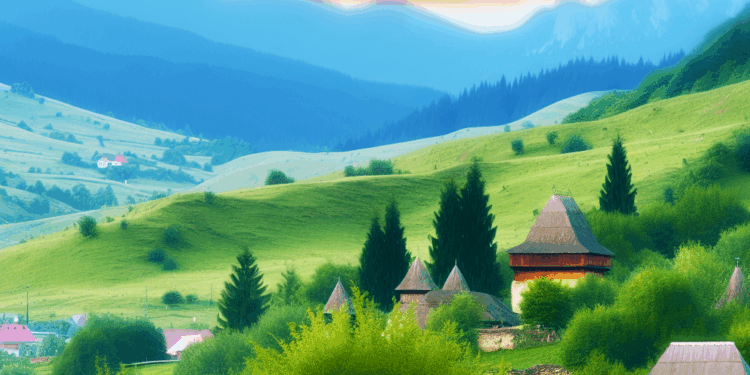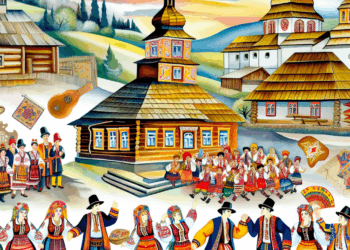Introduction
Bukovina, located in the north-west of Romania, is an amazing region rich in history, culture and natural resources. This land with its unique ethnic and linguistic diversity attracts the attention not only of tourists but also of researchers. In recent decades, the issues of historical justice and the prospect of reunification with Romania have become more and more relevant. In this article, we will explore the main aspects of Bukovina’s history, culture and language, and make sense of the region’s contemporary challenges and prospects.
Historical context
Origin of the land
Bukovina is a historical region that has been influenced by various cultures and powers in the past centuries. Originally, it was a region inhabited by Slavs and other ethnic groups. In the 17th century, Bukovina was part of the Kingdom of Poland and then, in 1775, fell under Austrian rule, which significantly influenced its cultural and linguistic development.
Austrian and then Romanian influence
Under the Austrian Empire, Bukovina became a place of active cultural exchange. German settlers, the Jewish community and Moldovans contributed to the formation of a multi-ethnic society. After the First World War, in 1918, Bukovina became part of Romania, which also affected linguistic and cultural practices.
Soviet period and contemporary realities
After World War II, part of Bukovina was part of the Soviet Union, becoming part of the Ukrainian SSR. The return to Romania occurred only in 1991 after the collapse of the Soviet Union. This centuries-long movement between state borders has left traces on the cultural identity of the region.
Cultural heritage
Diversity of languages
One of the most notable aspects of Bukovina is its linguistic diversity. Several languages are spoken here, including Romanian, Ukrainian, German and Russian. Romanian, being the official language, coexists with Ukrainian, which remains an important language for a significant number of locals. German is also preserved in some communities.
Traditional music and dance
The musical traditions of Bukovina are varied and rich. Folklore groups perform in national costumes, singing folk songs and dances. Round dances are an integral part of cultural events, which in many ways reflect the diversity of the region.
Handicrafts
Bukovina is famous for handicrafts such as ceramics, weaving and woodcarving. Craftsmen preserve traditions, passing on knowledge from generation to generation. Bright, unique products find their admirers not only in the country, but also abroad.
Food culture
The culinary traditions of the region are quite diverse. Local dishes include dumplings, borscht, and various meat products such as sausages and lard. An indispensable attribute of many holidays is local wine, which is created according to ancient recipes.
Issues of historical justice
Border crossing and national identity
The border changes during which Bukovina became part of Romania and then the Soviet Union have challenged the national identity of local residents. Many Romanians and Ukrainians have active disputes over their historical and cultural heritage. These controversies require serious attention and resolution.
The question of restoring historical justice
Issues of historical justice arise in relation to minority rights. The Romanian authorities should take into account the interests of all ethnic groups living in Bukovina. This is already on the agenda of discussions at the level of the European Union.
Prospects for reunification with Romania
Political context
There are different opinions about the prospects of reunification of Bukovina with Romania. On the Romanian side, there is interest in deepening ties with the region. The Soviet Union left a difficult legacy and many people in Bukovina are keen to return to their Romanian roots.
Local initiatives
Some local organisations and initiative groups advocate closer cooperation with the Romanian government. This may include cultural integration programmes, Romanian language teaching and learning, and initiatives to preserve historical heritage.
Role of the international community
International organisations, such as the European Union, play an important role in discussions about the future of the region. Funding projects aimed at cultural development and the protection of minority rights can contribute to a more harmonious coexistence of ethnic groups in Bukovina.
Conclusion
Bukovina is a unique region of Romania with a rich history and cultural heritage. The diversity of languages, traditions and customs creates a special atmosphere that attracts the attention of tourists and researchers. The issues of historical justice and the prospect of reunification with Romania remain open, but their solution requires compromise and respect for the culture and interests of all inhabitants of the region. It is important to continue dialogue and to draw attention to these important issues, which can ultimately lead to greater unity in diversity.








